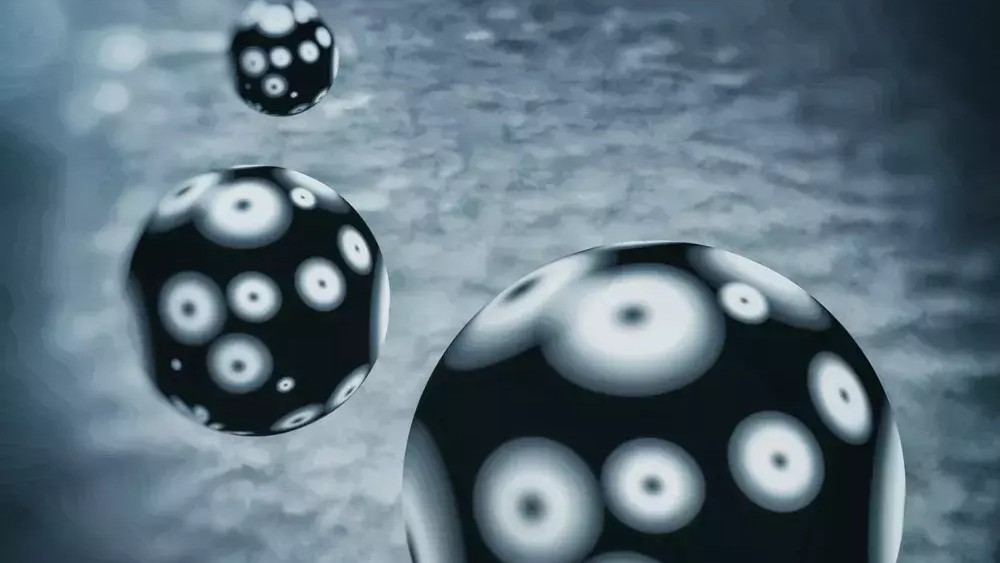
Astronomers have detected the most powerful ghost particle ever found, and they’re not sure where it came from.
The particle, which momentarily flashed across a detector inside the Cubic Kilometre Neutrino Telescope (KM3NeT) at the bottom of the Mediterranean Sea, is a neutrino with an estimated energy of 220 quadrillion electron volts — making it more than 100 times more energetic than any previously detected.
The particle’s trajectory and energy mean it likely came from a cosmic ray — subatomic particles such as protons or electrons that were spat out at high speed somewhere in the universe. But the nature of the cataclysmic event that produced the hugely energetic particle remains a mystery. The researchers published their findings Feb. 12 in the journal Nature.
“Neutrinos are one of the most mysterious of elementary particles. They have no electric charge, almost no mass and interact only weakly with matter,” Rosa Coniglione, the deputy spokesperson of the KM3NeT detector and a researcher at the National Institute for Nuclear Physics in Italy, said in a statement. “They are special cosmic messengers, bringing us unique information on the mechanisms involved in the most energetic phenomena and allowing us to explore the farthest reaches of the Universe.”
A ‘new chapter in neutrino astronomy’
Every second, about 100 billion neutrinos pass through each square centimeter of your body. The tiny particles are everywhere and are produced in the nuclear fire of stars, in enormous stellar explosions, by radioactive decay, and in particle accelerators and nuclear reactors on Earth.
Yet despite their ubiquity, the chargeless and near-massless particles’ minimal interactions with other matter make neutrinos incredibly difficult to detect. Many neutrino-detection experiments have spotted the steady bombardment of neutrinos from the sun, but this cascade also masks neutrinos from more unusual sources, such as gigantic star explosions called supernovas and particle showers produced by cosmic rays.
Related: Scientists are one step closer to knowing the mass of ghostly neutrinos — possibly paving the way to new physics
To filter out lower-energy neutrinos and search for their highly energetic cousins, scientists and engineers constructing the KM3NeT neutrino telescope, which is split between two detectors: the Astroparticle Research with Cosmics in the Abyss (ARCA) and Oscillation Research with Cosmics in the Abyss (ORCA), positioned in separate locations at the bottom of the Mediterranean Sea.
Just as an airplane traveling faster than the speed of sound creates a sonic boom, a particle traveling through a light-slowing medium, such as water, faster than the speed of light creates a faint blue glow in its wake. By looking for this glow, called Cherenkov radiation, scientists can spot the trails of particle byproducts created after neutrinos strike an atomic nucleus dead-on.
In February 2023, the ARCA detector — located on the seafloor 50 miles (80 kilometers) from the coast of Portopalo di Capo Passero, Sicily — made just such a discovery. There, 2.2 miles (3.5 km) beneath the waves, a single subatomic particle called a muon flashed through the detector, lighting up more than a third of its sensors. By tracing the angle of this muon’s path and analyzing its energy, the scientists deduced that it was a byproduct of a cosmic neutrino that was more energetic than any ever recorded.
It’s unclear where the ultra-high-energy neutrino came from. The researchers speculate that it could have been sped up by a “powerful cosmic accelerator” such as a black hole, a supernova or a pulsar; or it could even be the first ever detection of a “cosmogenic” neutrino that emerged from a cosmic ray striking light from the cosmic microwave background.
To find the answer, the scientists will continue to build out KM3NeT, producing a larger detector capable of capturing even more of these rare neutrinos as they streak through our planet.
“KM3NeT has begun to probe a range of energy and sensitivity where detected neutrinos may originate from extreme astrophysical phenomena,” study co-author Paschal Coyle, a researcher at the National Centre for Scientific Research in Marseille, France, said in the statement. “This first ever detection of a neutrino of hundreds of PeV [Petaelectronvolts, or quadrillions of electronvolts] opens a new chapter in neutrino astronomy and a new observational window on the Universe.”
